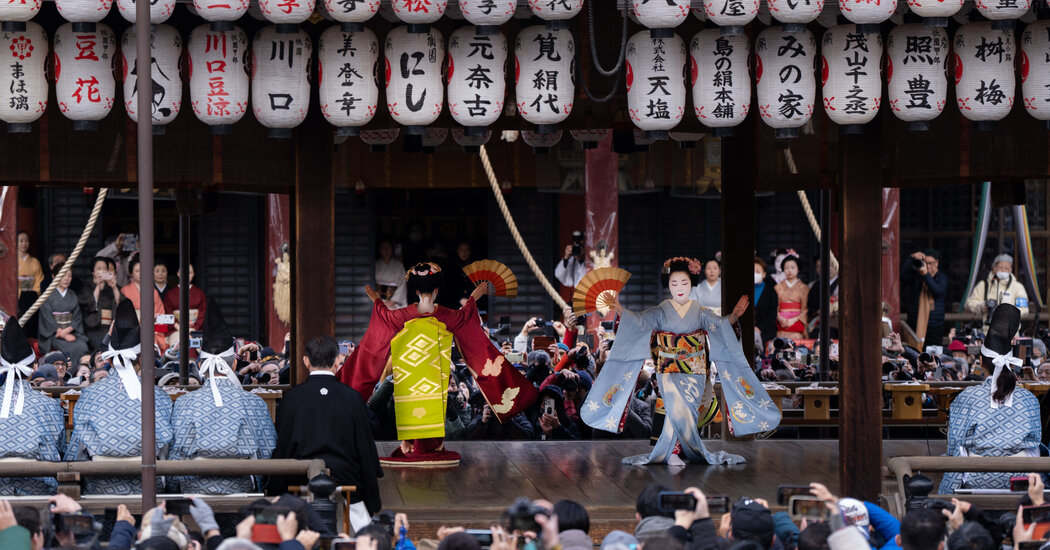As the sun peeked out from the cloudy sky in Kyoto, Japan, monks wearing vests trimmed with pompoms and the black box-like headdresses known as tokin were being quizzed in front of Mibu Dera, one of the oldest temples in the city. These were the Yamabushi (mountain hermits), part of a Buddhist sect known as the Shugendō.
To enter the temple’s sacred area, each monk had to prove he was a real Yamabushi by answering a series of questions about the sect’s beliefs, dress and tools. Only those with satisfactory responses would gain access.
Watching them was a trio of children in light-colored jackets, with six curious eyes trying to figure out what was going on, joined by me, a Korean American photographer with two big eyes filled with the same curiosity.
They were preparing for the Goma Fire Ritual, as part of the Setsubun Matsuri or Setsubun Festival, held on the day before the beginning of spring, according to the Asian lunar calendar. For ages, Japanese people have used the change of seasons to exorcise past misfortunes and offer prayers for future safety and prosperity. In Kyoto, Setsubun festivals are held at many of the city’s temples and draw crowds of thousands who celebrate a variety of rituals to bring good fortune and ward off evil spirits.
The children and I soon followed the monks into the grounds of the Mibu Temple where a pile of hinoki, or cypress leaves, was ready in front of the main hall for the Goma Fire Ritual.
The monks initiated the ritual with loud drumming, the blowing of the gigantic Horagai conch shell and chanting, as they ignited a fire to burn the hinoki leaves and gomagi, wooden sticks symbolizing human desires (the root of suffering) that had been added to the pile. The fire would ward off evil spirits for the coming year. An enormous cloud of smoke rose before the main hall and the nearby Thousand Body Stupa, which contains exactly 1,000 statues of Amida Nyorai, or the Buddha of Limitless Light, and Jizo, a bodhisattva known for compassion.
Busy junior monks poured buckets of water around the pyre as the earsplitting drums echoed and the roaring fire swallowed everyone’s bad luck.
As the senior monks chanted and prayed, the unruly orange fire was kept in check with the help of the sweating junior monks who poured buckets of water around its perimeter.
At the Yoshida Jinja or Yoshida Shrine, the highlight of the day was the Tsuina-shiki ceremony, when a devil-god named Hososhi, from ancient China, with four golden eyes and…
Click Here to Read the Full Original Article at NYT > Travel…
